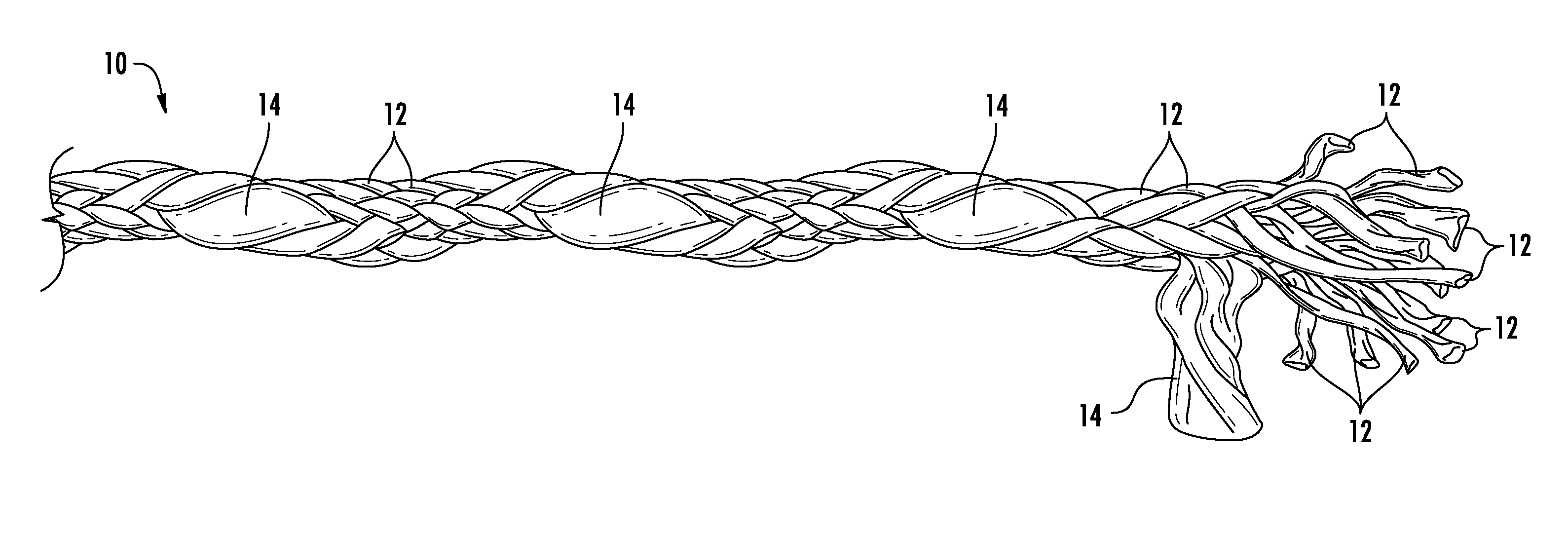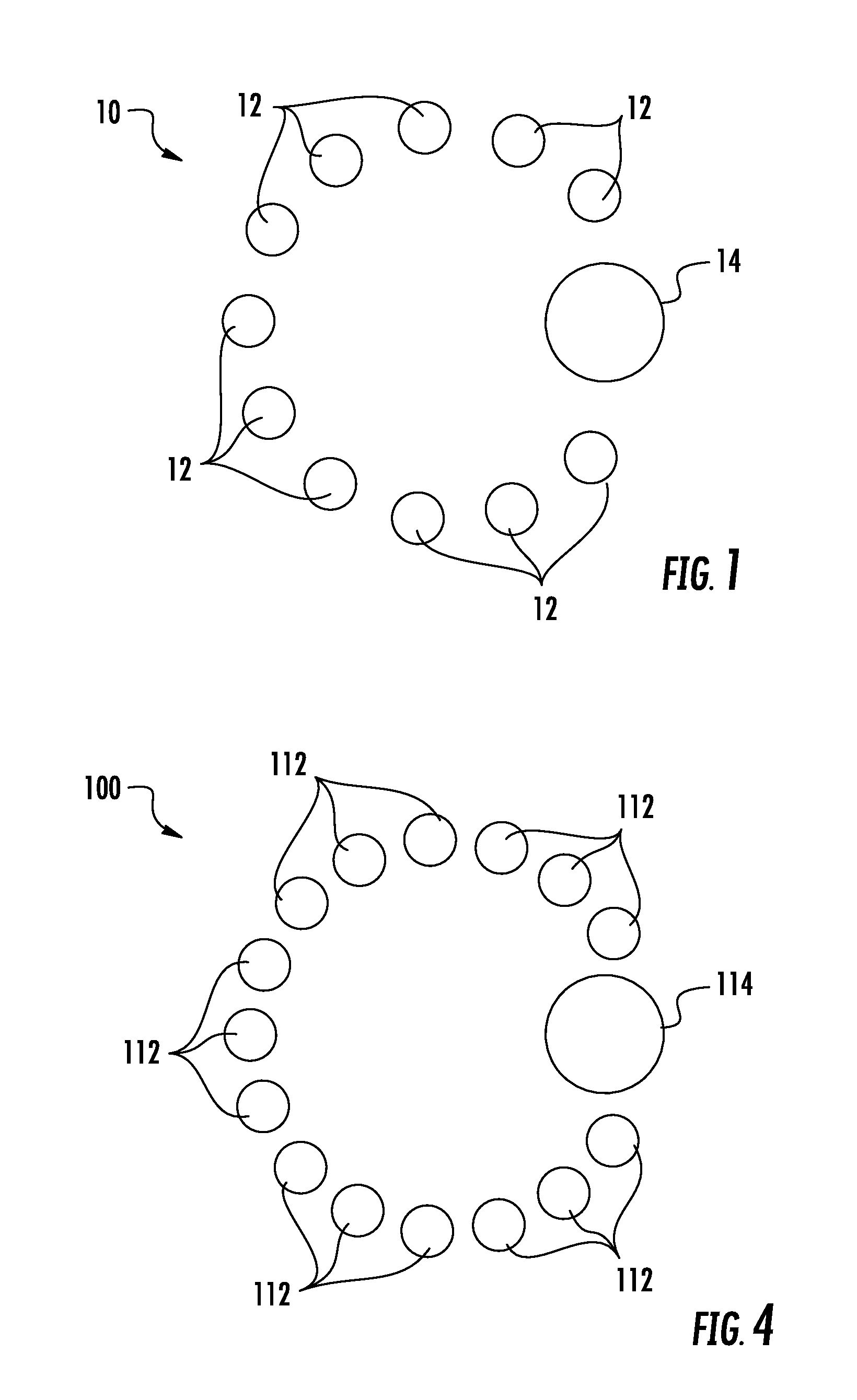Cord material and methods of using same
a technology of cord material and wing, applied in the field of cord material, can solve the problems of line drag, considered parasitic drag, up a large portion of total wing drag, etc., and achieve the effect of improving drag performance characteristics, reducing or eliminating vibration induced drag
- Summary
- Abstract
- Description
- Claims
- Application Information
AI Technical Summary
Benefits of technology
Problems solved by technology
Method used
Image
Examples
Embodiment Construction
[0031]A cord according to a preferred embodiment of the invention is illustrated in FIG. 1, and shown generally at reference numeral 10. As used herein the term “cord” refers generally to any cord, rope, or line type structure comprising a plurality of strands that are braided, woven, twisted or otherwise joined together. The cord 10 comprises a plurality of uniform strands 12, and at least one deviant strand 14.
[0032]As shown in FIG. 1, the cord 10 can have a total of eleven uniform strands 12, and one deviant strand 14. The strands 12, 14 have a substantially circular cross section, and can be braided together. The uniform strands 12 form a base braid having a substantially circular cross sectional shape.
[0033]As shown in FIG. 1, each of the uniform strands 12 have a substantially equal cross section area, and the deviant strand 14 has a cross section area approximately five times greater than one of the uniform strands 12. The much larger deviant strand 14 forms a protrusion on t...
PUM
| Property | Measurement | Unit |
|---|---|---|
| angle of attack | aaaaa | aaaaa |
| skin friction coefficient | aaaaa | aaaaa |
| molecular weight | aaaaa | aaaaa |
Abstract
Description
Claims
Application Information
 Login to View More
Login to View More - R&D
- Intellectual Property
- Life Sciences
- Materials
- Tech Scout
- Unparalleled Data Quality
- Higher Quality Content
- 60% Fewer Hallucinations
Browse by: Latest US Patents, China's latest patents, Technical Efficacy Thesaurus, Application Domain, Technology Topic, Popular Technical Reports.
© 2025 PatSnap. All rights reserved.Legal|Privacy policy|Modern Slavery Act Transparency Statement|Sitemap|About US| Contact US: help@patsnap.com



